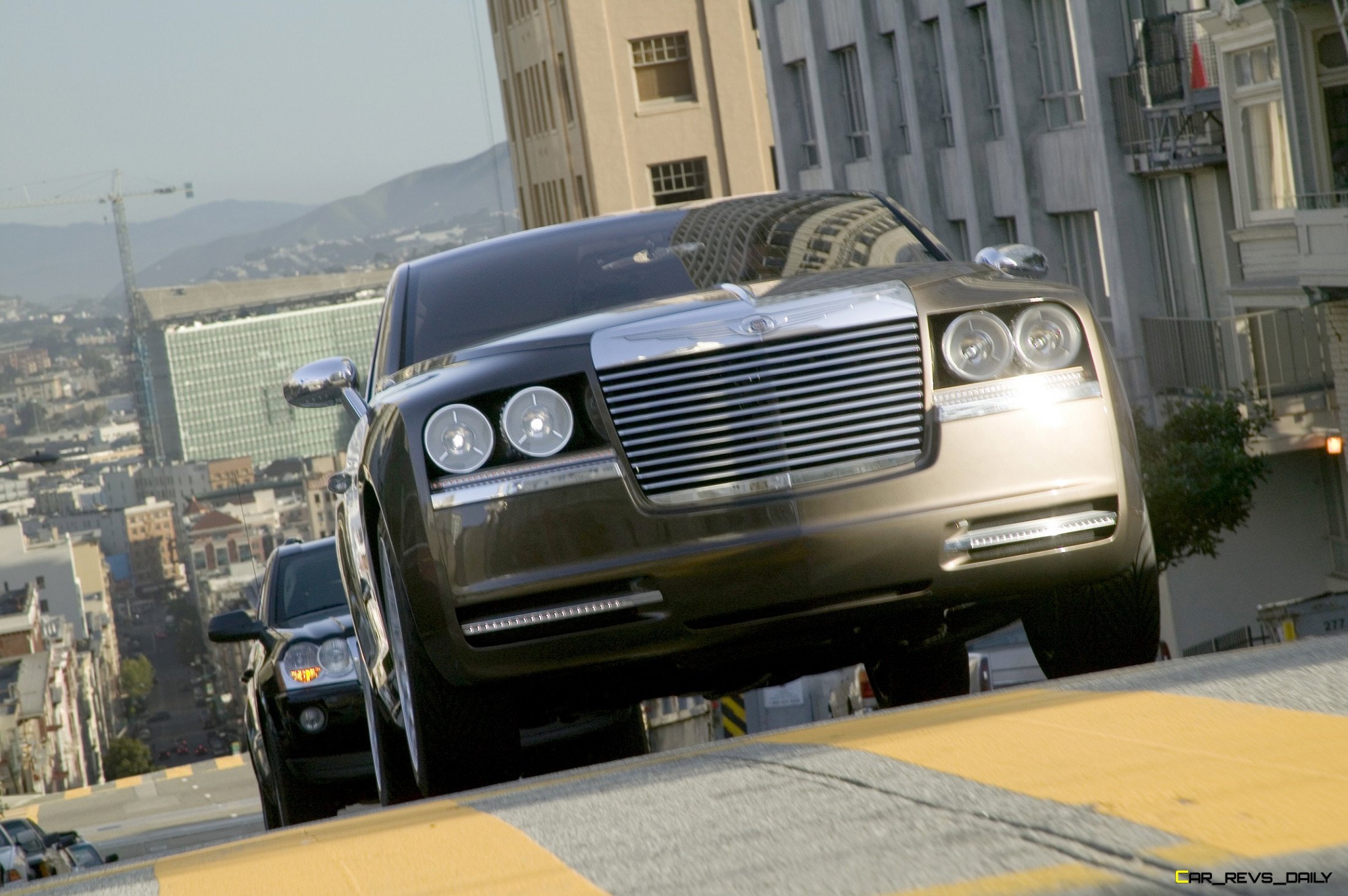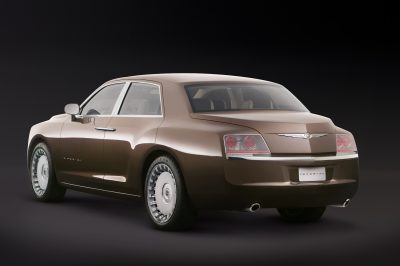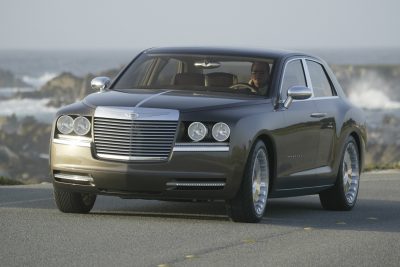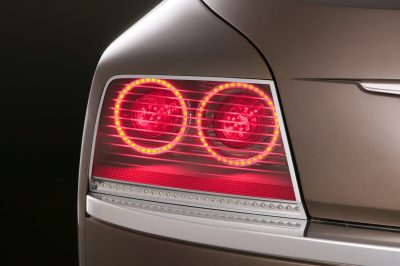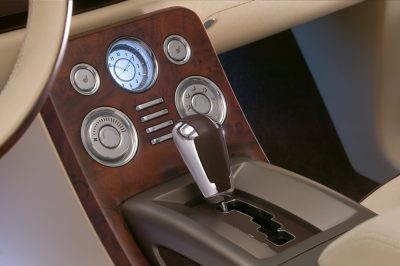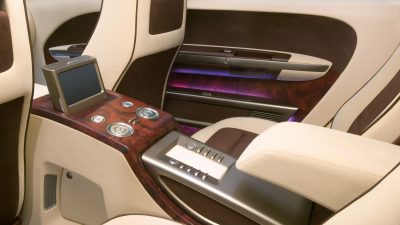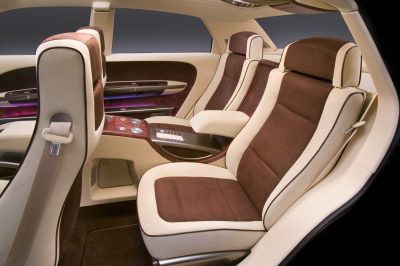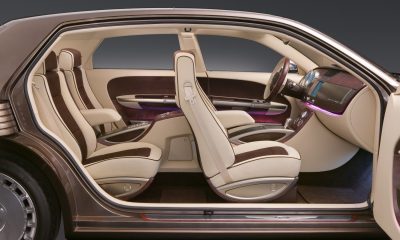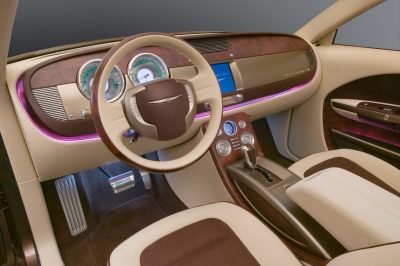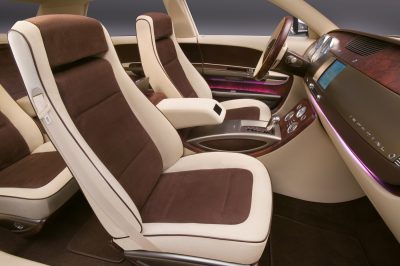Another week, and another Chrysler concept enters the spotlight in our ongoing concept and show car focused series. For those that missed us last week, you can forgive us for catching Teofino Lopez’s shocking upset victory over Vasyli Lomachenko on ESPN (we’re big fight fans at the Metro Detroit office) but with the dust having fully settled from that epic clash, it’s back to our weekend task of dissecting concept vehicles from years past to find out what happened to them after their time on the show circuit, and whether they had a lasting impact in current vehicle offerings? This week, we take on the Chrysler Imperial Concept to learn more about this ultimate expression of luxury, and whether it ultimately played a role in FCA’s product plans.
Classic elegance tailored for a modern age
When the Imperial concept first made its debut in 2006, Chrysler (now known as FCA) was firmly in the DaimlerChrysler era, and wanted to show the world what flagship American luxury would look like. The firm was also riding on the sales success of the recently launched 300C full size sedan which not only brought rear wheel drive back to the mainstream consumer, but also helped reboot the iconic 300 series of cars. The platform borrowed plenty of elements from the E-Class of the period, and would later showcase its immense flexibility long after the merger crumbled a few years later.
One of its first acts was underpinning the Imperial concept. Here, Chrysler designers tried to portray what a modern age Imperial would look like, while also showing that it could create a value focused package that could deliver opulent luxury for a value focused price. The exterior styling shared some core elements with the 300, but things were bigger, posher, and more elegant (much like 1930s era models.) This was mainly due to the front fascia which featured four large exposed headlights, a massive chrome front grille, and LED accented turn signals and running lights. Massive 22-inch wheels enhanced the Rolls Royce vibe, and helped create a commanding profile. The rear fascia was a smooth operator, and it featured a spiffy set of LED taillights as well as a prominent line that ran down the center of the trunk lid. A spiffy set of exhaust tips and an attractive hue of paint rounded things out, and the Imperial proved to be a very potent talking point when it first debuted.
Technology and class defined interior
But while the exterior styling delivered a very potent message, the interior reveled in its role of being a showpiece of luxury and technology. Chrysler statements during this period stated that the Imperial was a “drivers car” and that role showed itself in some key aspects of the interior design. The dashboard and instrument cluster for example were designed ton reduce distraction for drivers, and featured a layout that had very few knobs and switches. Despite this minimalism, the Imperial still came loaded with a whole suite of technology. This included warm ambient lighting, a rear seat entertainment system with wireless headsets, and even electrically retractable rear headrests. Our personal favorite features though are some of the old world charm that’s sprinkled throughout the cabin, including the large analog clock in the center of the IP.
The rest of the interior was typical show car, and included two tone leather and suede seats, a leather wrapped steering wheel, and some carryover controls from past Mercedes models. The rear seats in particular were designed to give passengers ample legroom, with the LX platform being stretched a bit to help deliver the extra floorspace. On the subject of that platform, it also meant that the Imperial would be paired with some serious firepower under the hood. That came in the form of a 5.7 liter Hemi V8, and while the Imperial was never allowed to go at the traditional speeds you see in everyday road cars (mainly due to its display over function purpose) the concept was one of the rare members of the order to actually be functional, with the car capable of being driven at low speeds.
What happened to it?
The Imperial concept had a very impressive run on the show circuit during the 2006 auto show season. But while it did make waves, it ultimately did not make production. While the exact reasons why will very on depending who you ask, two key factors emerge as likely suspects. The first is the sheer dysfunction that existed in the halls of Auburn Hills and Stuttgart during the merger. It’s no secret that the two cultures were consistently clashing, and Benz officials had no problem either overriding decisions or denying Chrysler access to some of the juicier bits of technology that the company had at the time (models like the 300 and the Crossfire used older Benz platforms versus newer ones.) As such, the idea of an Imperial in Chrysler showrooms possibly being an internal threat to the world class S-Class might not have sat well with some execs at the time.
A second theory is that the Imperial was an unfortunate victim of very bad timing after its debut. While the economy in 2006 was still very good, things rapidly collapsed shortly after, when the 2007-2008 financial crisis took hold on the world. In the U.S. The effects were particularly devastating, and one of the first major casualties of the crisis were the American automakers. All three (Ford, GM and Chrysler) made there profits through the sale of SUVs and pickup trucks. These profits also helped fund future vehicle projects to a certain extent, and when the collapsing economy caused an equally dramatic tumble in sales, it put them in a bind.
Chrysler was no exception, and it had to weather through a number of challenges through this period. This included the dissolution of DaimlerChrysler, and the short period the company was under the control of Cerberus. As such, funding for projects was cut or slashed, and that could have included the Imperial. Rumors persist however, that some early test mules were created, so it would seem that perhaps things were just getting off the ground for the program when everything else happened all around it.
Unlike the T-Rex concept we last featured, tracking down the current whereabouts of the Imperial Concept is more difficult, we suspect that it could possibly be in internal storage at the company, but it has not made too many public appearances since then. If it’s in internal storage, that could mean that we will not see it for a very long time. But while the Imperial concept is camera shy these days, rumors still circulate about FCA perhaps making a model in the near future (those reports have been largely unfounded so far.)
However, the Imperial’s influence on current FCA products is hard to ignore, with the 300 perhaps being the most visible example. While the model has seen its sale star shrink due to the rapid growth of SUV and utility vehicle sales, its clear that some of the Imperial’s DNA rubbed off on it in recent years. The Imperial was one of the first Chrysler concepts that appeared to show the world that the company was indeed capable of making world class interiors, and the current 300’s cabin has benefitted from a number of upgrades and revisions that upped its luxury game. This includes higher quality materials, better infotainment systems, and even higher levels of performance.

Carl Malek has been an automotive journalist for over 10 years. First starting out as a freelance photographer before making the transition to writing during college, his work has appeared on numerous automotive forums as well as websites such as Autoshopper.com.
Carl is also a big fan of British vehicles with the bulk of his devotion going to the Morgan Motor Company as well as offerings from Lotus, MG, and Caterham. When he is not writing about automobiles, Carl enjoys spending time with his family and friends in the Metro Detroit area, as well as spending time with his adorable pets.

